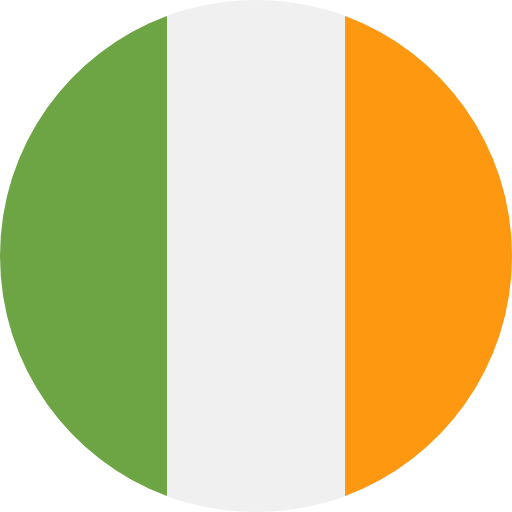About IE

Ireland is a country located in northwestern Europe. It is an island nation that is situated to the west of Great Britain and is separated from it by the Irish Sea. The official name of Ireland is the Republic of Ireland (Poblacht na hÉireann in Irish), and its capital city is Dublin.
Here are some basic facts about Ireland:
Population: As of 2021, the population of Ireland is estimated to be around 4.9 million people.
Language: The official languages of Ireland are Irish (Gaeilge) and English. Irish is considered to be the first official language of the country, but English is more widely spoken.
Currency: The official currency of Ireland is the euro (EUR).
Government: Ireland is a parliamentary democracy with a President as its head of state. The Taoiseach (prime minister) is the head of government.
Economy: Ireland has a mixed economy that is heavily influenced by foreign investment. Key sectors include pharmaceuticals, technology, and finance.
Geography: Ireland covers an area of approximately 70,273 square kilometers, and is the third largest island in Europe. The country has a varied landscape, with mountains, rivers, lakes, and coastlines.
Climate: Ireland has a temperate maritime climate, with mild winters and cool summers. The weather can be unpredictable, and rain is common throughout the year.
Culture: Ireland has a rich cultural heritage, with a strong tradition of music, literature, and folklore. Some of the country's most famous cultural exports include the works of writers such as James Joyce and W.B. Yeats, as well as traditional Irish music and dance.

National Culture Objects
Claddagh Ring
The Claddagh ring is a traditional Irish ring representing love, loyalty, and friendship. It symbolizes Ireland's rich heritage in jewelry making and the cultural significance of symbols in Irish tradition.
Harp
The harp is a national symbol of Ireland, appearing on the country's coat of arms and currency. It represents Ireland's long-standing musical traditions and its historical significance in Irish culture.
Shamrock
The shamrock, a three-leafed clover, is a symbol associated with Saint Patrick, the patron saint of Ireland. It represents Irish heritage, Saint Patrick's Day celebrations, and the concept of luck.
Guinness
Guinness is a world-famous Irish stout beer originating from the brewery in Dublin. It symbolizes Ireland's brewing history and the global recognition of its signature dark beer.
Book of Kells
The Book of Kells is an illuminated manuscript Gospel book created by Celtic monks. It symbolizes Ireland's rich literary and religious history and its contributions to medieval art.
Aran Sweater
The Aran sweater, also known as a fisherman's sweater, is a traditional Irish garment originating from the Aran Islands. It represents Irish knitting traditions and the practical, yet intricate, craftsmanship of the Irish people.
Riverdance
Riverdance is a theatrical show consisting of traditional Irish music and dance. It symbolizes the vibrancy of Irish performing arts and the global popularity of Irish dance.

The national anthem of Ireland is called "Amhrán na bhFiann" (in English, "The Soldier's Song"). It was originally written in the Irish language by Peadar Kearney and later translated into English by Liam Ó Rinn. The song was adopted as the national anthem of the Republic of Ireland in 1926.
Here are the lyrics of the Irish national anthem:
Sinne Fianna Fáil,
Atá faoi gheall ag Éirinn,
Buíon dár slua
Thar toinn do ráinig chugainn,
Faoi mhóid bheith saor,
Seantír ár sinsear feasta,
Ní fhágfar faoin tíorán ná faoin tráill.
Anocht a théam sa bhearna bhaoil,
Le gean ar Ghaeil, chun báis nó saoil,
Le gunnascréach, fuarúr, leómhán ar saimh,
Lyrics táinig ár sinsir feasta
Ní fhágfar faoin tíorán ná faoin tráill.
Translation:
Soldiers are we,
whose lives are pledged to Ireland,
Some have come
from a land beyond the wave,
Sworn to be free,
No more our ancient sireland,
Shall shelter the despot or the slave.
Tonight we man the gap of danger,
In Erin's cause, come woe or weal,
'Mid cannon's roar and rifle's peal,
We'll chant a soldier's song.
In English, the song is usually sung with the first verse in Irish and the remaining verses in English.


